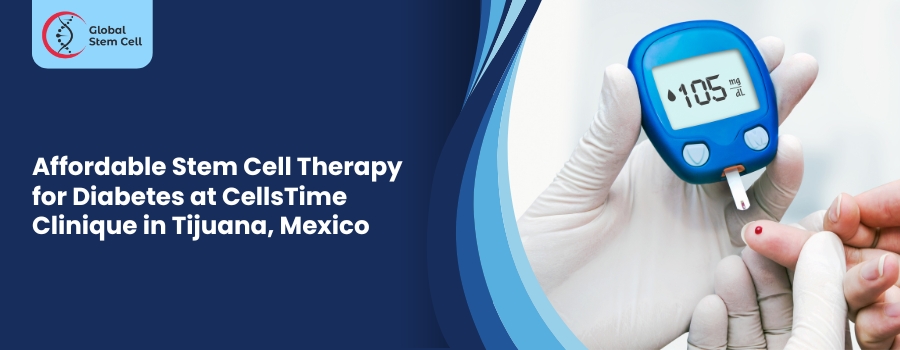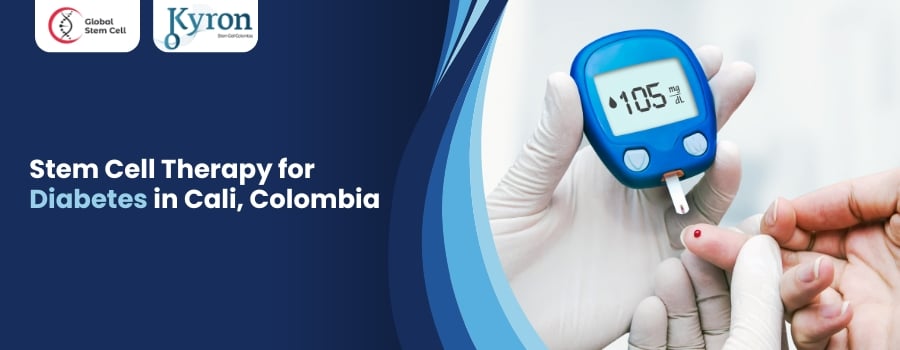
Stem cell therapy is a new way to help fix parts of the body that are hurt. For people with diabetes, it can help the body make insulin again. Insulin is important because it helps keep blood sugar levels normal. Mexico is a good place for this treatment because there are good doctors, nice hospitals, and the cost is not too high.
Could Stem Cells Help Manage Your Diabetes?
Doctors in Mexico use stem cells to help fix the pancreas, which makes insulin. This can help people with diabetes feel better and control their blood sugar. Mexico is a great choice because it is affordable, easy to get to, and has experienced doctors.
Table of Content
What is Diabetes?
Diabetes is when there is too much sugar in the blood. There are different kinds of diabetes:
- Type 1 Diabetes: This happens when the body attacks the cells that make insulin. People with Type 1 need insulin shots every day. It usually starts when people are young, but adults can get it too.
- Type 2 Diabetes: This happens when the body cannot use insulin well or does not make enough. It is common in adults, but more kids are getting it too because of being overweight. It can be helped with a healthy diet, exercise, and medicine.
- Gestational Diabetes: This type happens during pregnancy because of changes in hormones. It usually goes away after the baby is born, but it can make it more likely for the mom to get Type 2 diabetes later.
- Prediabetes: This means blood sugar levels are higher than normal but not high enough to be diabetes. It can often be prevented from becoming Type 2 diabetes by making healthy choices.
- Monogenic Diabetes: This is a rare kind caused by a change in one gene. It can happen when babies are very young or when people are a little older.
- Secondary Diabetes: This type happens because of other health problems or medicines that affect insulin.
How Stem Cell Therapy Helps Treat Diabetes?
Stem cell therapy is a hopeful treatment for diabetes, especially Type 1. Stem cells are special cells that can turn into different kinds of cells in the body. In stem cell therapy, these cells can become insulin-making cells. Here’s how it can help:
- Making New Insulin Cells: Stem cells can turn into insulin cells to replace the ones that were destroyed.
- Protecting Insulin Cells: Some treatments help stop the body from attacking new insulin cells.
- Helping Insulin Work Better: For Type 2 diabetes, stem cells might help the body use insulin better.
Stem cells can come from different places:
- Embryonic Stem Cells (ESCs): These can become any kind of cell, like insulin cells.
- Induced Pluripotent Stem Cells (iPSCs): These are adult cells changed to act like embryonic cells.
- Adult Stem Cells: Found in bone marrow or fat, these can help fix insulin cells or support other cells.
Scientists are still studying how well stem cell therapy works for diabetes. Some early results are good, but it is still being tested.
Cost of Stem Cell Therapy for Diabetes in Mexico
Stem cell therapy for diabetes in Mexico is affordable compared to other countries. The cost usually starts from $6,000, and more advanced treatment plans can range from $8,000 to $12,000, depending on the complexity of the case.
| Cost of Treatment | Price (in USD) |
|---|---|
| Stem Cell Therapy for Diabetes | Starting from $6,000 |
| Advanced Treatment Plan | $8,000 – $12,000 (depending on the complexity) |
Best Stem Cell Clinics for Diabetes Treatment in Mexico

MexStemCells in Mexico City, Mexico
MexStemCells is a top clinic in Mexico for diabetes stem cell treatment. They use special cells to help the body make more insulin. The doctors make special plans for each person to help them get better.

Stem Health in Guadalajara, Mexico
Stem Health has a team that helps people with diabetes. The doctors, therapists, and other helpers work together to make special plans for each person to help them make more insulin.

ProgenCell in Tijuana, Mexico
ProgenCell is a top clinic for diabetes stem cell therapy. They use special cells from the patient’s own body to help make more insulin and control blood sugar. This is safer and helps avoid problems. They support patients every step of the way.
Steps of Stem Cell Therapy for Diabetes in Mexico
Stem cell therapy for diabetes usually has these steps:
- Consultation and Checkup: The doctor talks to the patient to see if they are a good fit for stem cell therapy. They look at health history and current health.
- Treatment Plan: The doctor makes a plan for the patient. It says what kind of stem cells will be used and how many treatments are needed.
- Stem Cell Collection: Stem cells are taken from the patient’s body (autologous) or from a donor (allogeneic). They are usually taken from bone marrow or fat under local anesthesia.
- Processing: The stem cells are sent to a lab where they are cleaned and prepared for the treatment.
- Stem Cell Administration: The stem cells are put into the patient’s body through an IV or injections. This is done at a clinic under the care of a doctor.
- Care After Treatment: After the treatment, the patient is watched for side effects. They may also get extra treatments to help make the stem cell therapy work better.
- Follow-Up: The patient will visit the doctor regularly to see how well the treatment is working and to make changes if needed.
- Healthy Habits: The patient is told to eat healthy, exercise, and take any needed medicine. These habits can help make the treatment last longer.
Patient Story
Many patients have said they feel better after stem cell therapy for diabetes. They talk about better blood sugar control, more energy, and feeling happier. If you want to learn more, contact us today and see how this treatment can help you. Start your journey to feeling better now!






